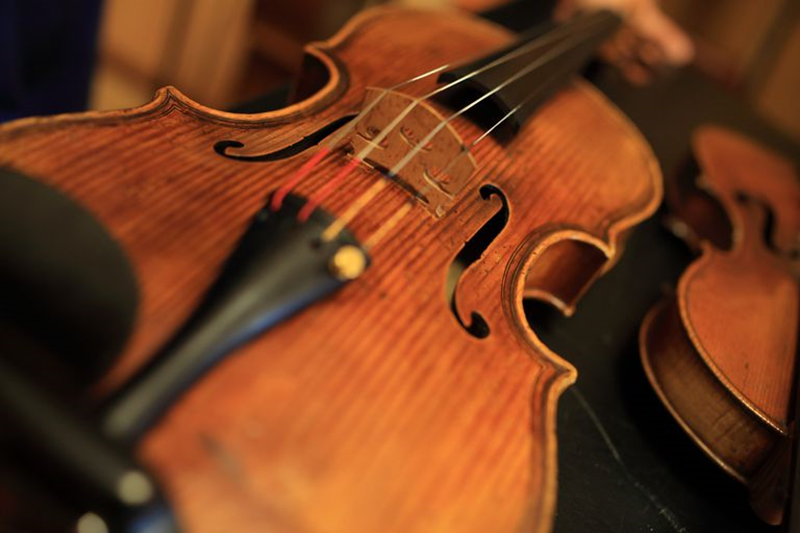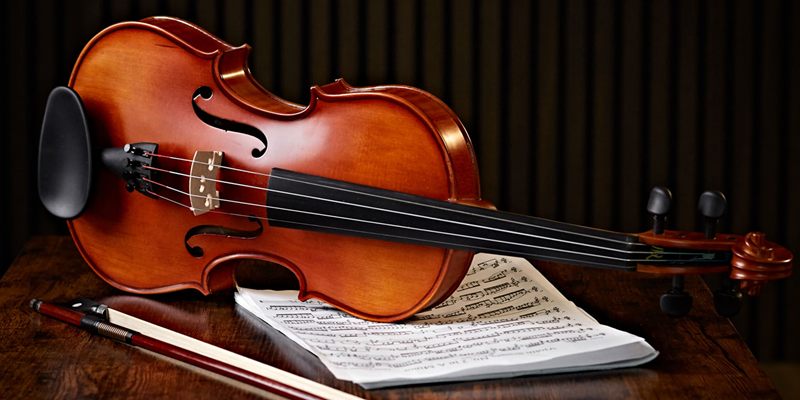Learning to play the violin is an exciting journey, but reading sheet music can feel a bit like trying to understand a foreign language at first. There are lines, symbols, and notes that seem to be dancing across the page, and it can be overwhelming to figure out what it all means.
The good news? It’s much easier than it looks! Once you get familiar with the basics, reading music will feel as natural as reading a book. Whether you're just starting or have been playing for a little while, this guide will help you understand the essential parts of violin sheet music in a simple and enjoyable way.
Understanding the Ba sics
sics
Before we start playing, let’s get to know what we’re looking at on the violin sheet. With little instructions, you'll see that it's not that hard to read it.
The Staff and Treble Clef
Violin music is written on something called a staff—which is just a fancy name for the five lines where notes are placed. The violin uses the treble clef, a decorative symbol at the start of the staff that tells us which notes go where.
Notes on the Staff
Each line and space represents a note. A simple way to remember them is:
- The notes on the lines spell out E - G - B - D - F, which you can remember with: Every Good Boy Deserves Fun.
- The notes in the spaces spell F - A - C - E, just like the word "FACE."
By keeping these in mind, you’ll always know which notes to play when looking at violin sheet music.
Counting the Rhythm
Playing the right notes is important, but music is more than just hitting the right keys—it’s about playing them at the right time.
How Long to Play a Note
Each note has a different length, which tells you how long to hold it.
- A whole note is a long note, lasting for four beats.
- A half note lasts for two beats.
- A quarter note is short, lasting one beat.
- An eighth note is even shorter, lasting half a beat.
Think of it like clapping along to a song. Some notes will be held longer, while others will be quick and snappy. Once you get the hang of counting beats, you’ll find it much easier to keep up with the music.
Making Sense of the Symbols
When you look at a piece of violin sheet music, you might notice extra symbols scattered around. These help shape the way you play the notes.
Sharp (#) and Flat (♭) Notes
Sometimes, notes need to be played slightly higher or lower. A sharp (#) means the note is raised a little, while a flat (♭) means it's lowered. These changes are written at the start of the music in something called a key signature, which tells you which sharps or flats to expect throughout the piece.
Time Signature: Understanding the Beat
At the very beginning of the music, next to the treble clef, you’ll see two numbers stacked like a fraction. This is the time signature, and it tells you how the beats are grouped in the song.
For example, if you see 4/4, it means there are four beats in each section (or measure) of the music. If you see 3/4, it means there are three beats in each measure—like a waltz!
Violin-Specific Markings
Violin music has special markings that help with how you move the bow.
Bowing Directions
- A down-bow (? or Π) means you should pull the bow down, starting from the frog (the thicker part of the bow).
- An up-bow (? or V) means you push the bow up, towards the tip.
These markings help keep your bowing smooth and natural.
Playing Style
- A slur (a curved line connecting notes) means you should play them in one smooth bow stroke.
- A staccato dot above or below a note means you should play it short and crisp.
- An accent (>) means you should play the note with a little extra emphasis.
These small details help make the music sound more expressive and lively.
A Simple Exercise to Get St arted
arted
The best way to learn to read violin sheet music is by practising a little each day. Here’s a super simple exercise to try:
- Play the G string (the lowest string) and hold the note for four beats.
- Move to the D string and play for two beats.
- Play the A string for one beat.
- Finally, play the E string for one beat.
- Repeat this, slowly at first, then gradually speed up.
This exercise helps you get used to reading notes while also improving your bowing control.
Conclusion
Reading violin sheet may seem challenging at first, but by breaking it down into simple steps, you’ll quickly build confidence. Learning to recognise notes on the staff, understanding rhythm, and becoming familiar with key and time signatures are essential foundations. As you progress, paying attention to violin-specific symbols will help you play more expressively and bring the music to life.
Regular practice will reinforce your skills and make reading sheet music feel more natural over time. With patience and dedication, you’ll soon find yourself playing with ease and enjoying the beautiful world of violin music. Happy practising!